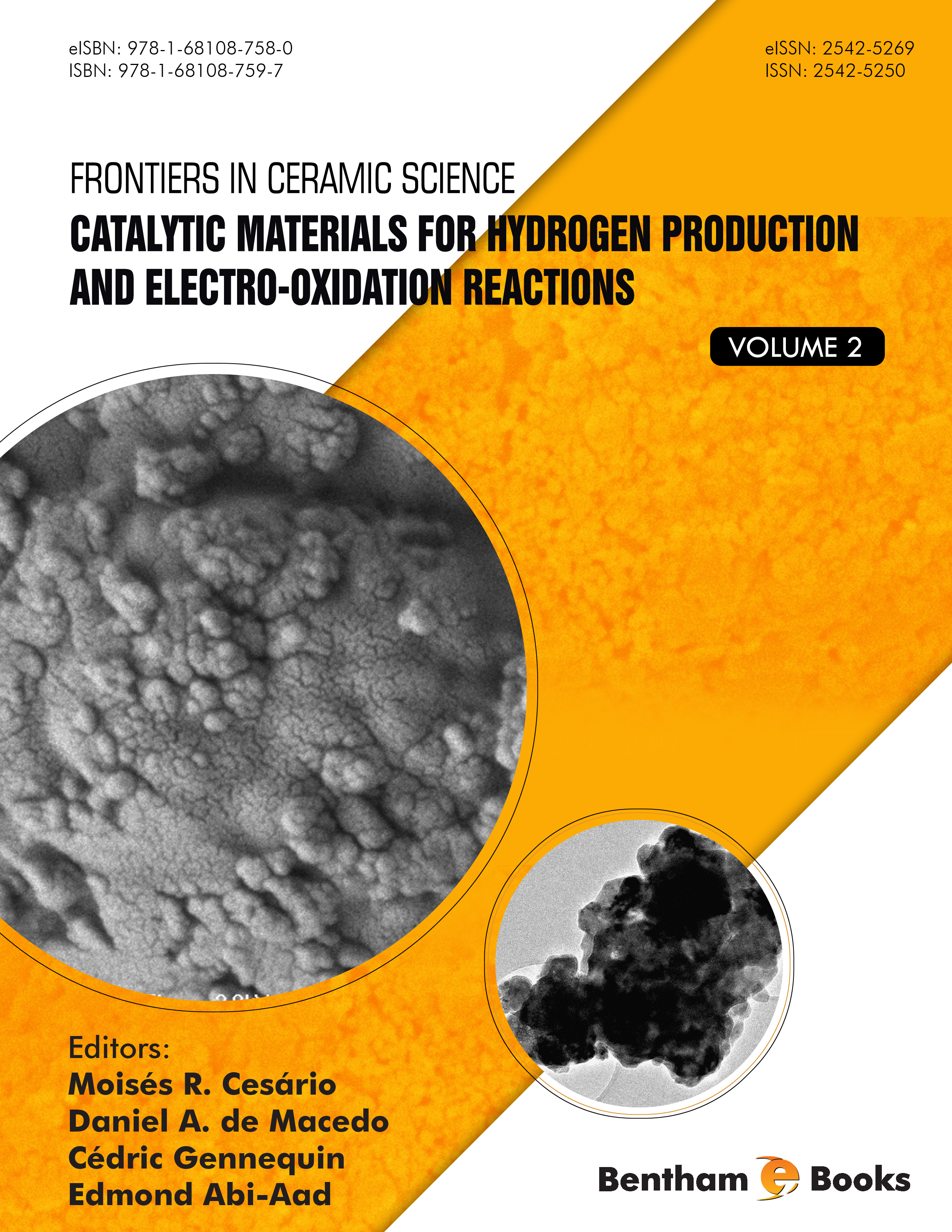The reduction of greenhouse gases is effectively our current focus in order to have a more sustainable life and environment. In this context, the main focus of this book is hydrogen production processes and hydrogen electro-oxidation reactions. These two joint aspects will allow to propose a catalytic/electrocatalytic solution to the environmental problems. Understanding the properties of catalytic materials and catalysis parameters governing chemical and electrochemical reactions in reforming reactions and energy conversion devices, such as solid oxide fuel cells, are the main topics of this book.
The book begins with a chapter addressing the hydrogen production by steam reforming of biomass renewable resources and biomass tar. The reactivity of different catalytic materials, mainly molybdena and vanadia-based catalystys, as well as their advantages and disadvantages in the steam reforming reaction has been addressed.
The second chapter reports the study of steam reforming coupled with CO2 sorption. The authors focused on the development of a bifunctional material capable of sorber CO2 and being active and stable in steam methane reforming at unusual temperatures.
The third chapter presents a review on the recent advances in the catalytic dry reforming of methane, alcohols and biomass tar. The authors propose a discussion on preparation methods and physico-chemical properties of most recent catalytic materials used in this process. A special attention has been paid to the different strategies to minimize the carbon deposition problem. Emphasis is also given to the plasma, microwaves, solar energy, and electrical current technologies associated to dry reforming reactions.
The forth chapter focuses on the applicability of bimetallic catalytic materials in the dry reforming of methane. Thermal, structural, textural, and catalytic studies have been emphasized. Moreover, the electrocatalytic performance of hydrogen and biogas electro-oxidation reactions has been studied by impedance spectroscopy.
The fifth chapter reports the history, concept, operation principle, electro-oxidation reaction mechanisms, and the anode component of SOFCs, addressing recent works in the field. Emphasis is also given to the preparation of electrocatalyst and how the synthesis parameters could affect microstructure and electrochemical properties.
The sixth chapter is also addressed to discuss anode materials, mainly perovskite-type oxides, for electro-oxidation reactions. The authors propose a comprehensive discussion on the development of electrode materials with combined properties of structural stability, electronic and ionic conductivity, thermal and chemical expansion, and electrochemical activity.
We would like to express our gratitude to all the eminent contributors for their excellent contributions and we believe that this e-book will be a reference to academic/industrial scientists from chemistry, physics, and materials science interested in the catalytic materials for hydrogen production and their valorization in electro-oxidation reactions.
Moisés R. Cesário, Cédric Gennequin, Edmond Abi-Aad
Unit of Environmental Chemistry and Interactions with Living Organisms,
University of the Littoral Opal Coast, Dunkerque,
France
&
Daniel A. de Macedo
Department of Materials Engineering,
Federal University of Paraíba, João Pessoa - PB,
Brazil

